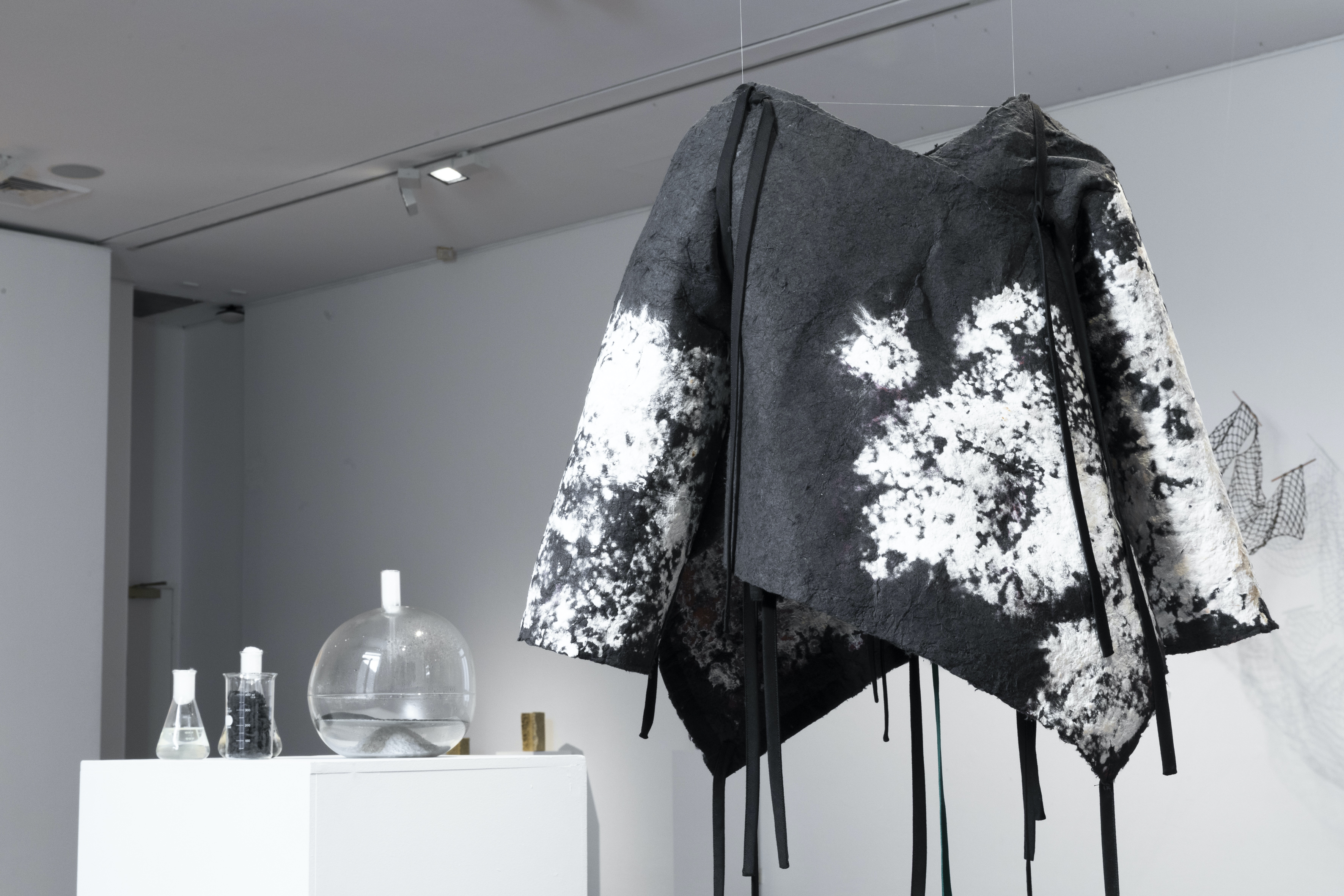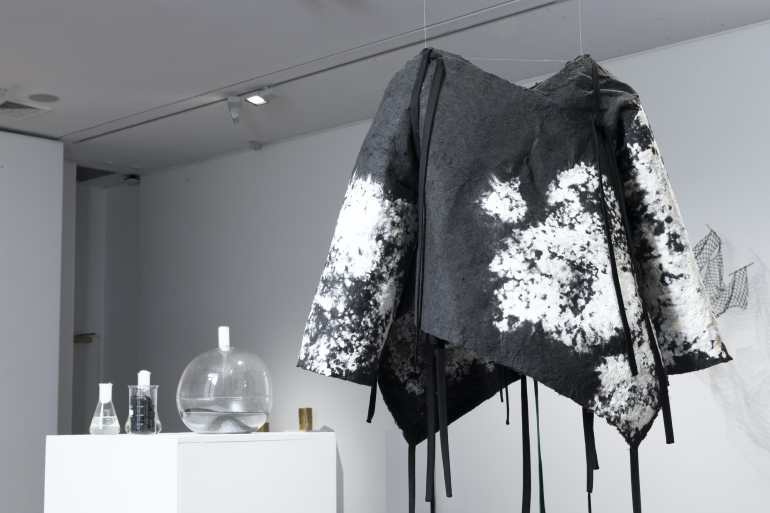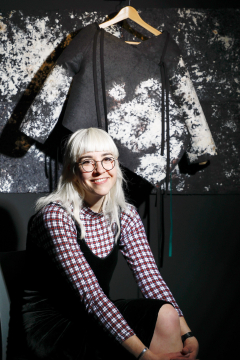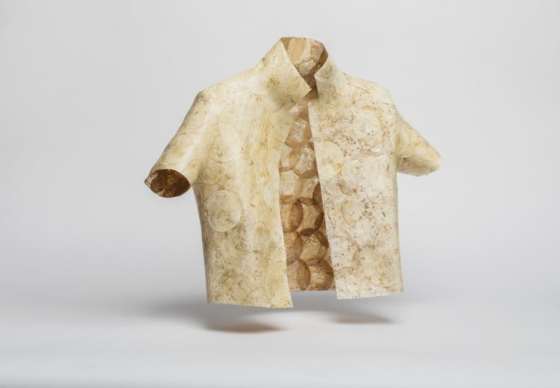
Threading together a future of sustainable fashion may be found in the use of ‘biodesign’ practices.
Fashionmongers and couture lovers have descended into Sydney this week for the Afterpay Australian Fashion Week. While Fashion Week celebrates the best of current and emerging Australian fashion and design, there is an undeniable demand for more sustainable practices across the industry.
The fashion industry is responsible for 10% of global carbon emissions and is the sixth-most polluting industry in the world. Apparel consumption is predicted to rise by 63% to 102 million tons per year in 2030. Significantly contributing to this pollution is the production of cheap materials to keep up with "fast fashion" trends, which results in 85% of textiles ending up in landfill and oceans. The fast fashion phenomenon means that once consumers are done with the seasons’ trends, they move onto the next, generating a seemingly endless cycle of waste.
There is some hope for a greener future for the fashion industry, however. Still in its infancy, the concept of biodesigned clothing may offer a much more planet-friendly alternative to mass produced fast fashion because it produces textiles that can be grown naturally and which are sustainably compostable.
According to UNSW Canberra’s Dr Nina Williams, the desire to produce alternative materials is imperative. Consumers are becoming more aware of the large-scale impact the fashion industry has on the environment and are turning towards ‘conscious’ fashion.
What is ‘biodesign’?
Biodesign is an evolving term, but it is often used to refer to the integration of biological processes into traditional design thinking and practice.
This can include biomimicry, which involves mimicking or emulating the processes or structures of living systems; or bioengineering, which is technologically manipulating or reprogramming biological systems.
“Most commonly, biodesign refers to the use of organic systems in the design process itself,” Dr Williams said.
Biodesign is not a new process. In 1925, microbiologist Maurice Lemoigne identified polyhydroxyalkanoates (PHAs) as a biodegradable plastic that could be produced by bacteria. The next steps towards a truly sustainable fashion industry could be found in the contemporary use of biodesign.
“In the context of fashion, common examples of biodesign includes the fermentation of yeast to create compostable leather-like fabrics; the use of mycelium (the root-like structure of fungus) to grow a biodegradable, waterproof and fire-resistant material; or the colonisation of bacteria as a less toxic alternative to textile dyes,” she said.
Simply put, biodesign can be imagined as a way to naturally grow textiles that are sustainably compostable.
Biodesign in practice: “Myconstellation Jacket” by Alia Parker
UNSW School of Arts & Design’s Alia Parker is no stranger to the practice of biodesign. In her project titled “Myconstellation Jacket”, Alia re-processed discarded clothing that was beyond repair into textile sheets using paper-making techniques. These textile planes were then introduced to mushroom mycelium, which formed white fungal networks across the material to create a unique white pattern on the final product.
“In this time of ecological catastrophe and waste accumulation, Myconstellation Jacket looks to model alternative design methods that can be generative of an ethic of care for both more-than-human ecologies and the textile objects they co-produce,” Alia said.
“The interdisciplinary field of biodesign offers a possible paradigmatic shift to how we interact with living systems as well as a panacea to the unsustainable production, consumption and disposal that has come to define the fashion and textile industry,” she said.
Biodesign is slow, but fashion is ‘fast’
If biodesign offers an enticing solution in growing sustainable fashion, why don’t we see retailers making this readily available for the everyday consumer?
According to Dr Williams, one of the key barriers to mass-produced biodesign clothing is that “fashion manufacturers aren’t typically willing to invest in products that will then require the research and development necessary to fully mature and patent a product”.
Put simply, it is an expensive and long process when scaled up for the masses.
Biodesign does however open the conversation towards slowing down the fast fashion trend.
“In a recent article, I discuss how biodesigners are often required to wait for their materials to grow, which has the potential to disrupt the fast fashion model by encouraging slower production processes and new ways of relating to materials,” Dr Williams said.
On the opposite end, designer Aniela Hoitink responds to fast fashion by using biodesign as a method of producing materials that biodegrade rapidly. Therefore, allowing consumers to wear clothing once or twice, but still using sustainable materials that do not pollute the earth.
“This kind of approach is fascinating I think because it keeps the space alive where we are thinking about what the problem is and in what ways we might respond to it,” Dr Williams said.
What is the future of fashion?
While we aren’t currently seeing biodesign clothing in our local retailers, the approach adds more thought towards an ongoing acceptance of a culture of sustainable fashion.
It is undeniable that the fashion industry has a concerningly significant impact on our environment. Whether it is the amount of energy or resources required to produce textiles, transporting of finished garments, or the eventual discarding of unwanted clothing, it is a large-scale industry that every individual on this planet is a part of.
Fashion lovers and consumers are becoming more aware of the problem. Fashion company Lyst reported that searches for clothing containing the keyword ‘mushroom’ increased by 37% in 2022, and TikTok DIY-ers are increasingly experimenting with biodesign from their own homes.
While biodesign may not be commercialised at large, the practice offers one way to move towards acceptance of conscious fashion choices.
“To reduce its environmental impact and work in more regenerative ways, the fashion industry must come up with new ways of working at social, economic and political – not just industrial – levels,” Dr Williams said.
“In my research working with biodesigners, I have found that the potential of biodesign is not limited to the creation of alternative products. Rather it can act as an invitation to think critically about the way humans have approached the biological world as a resource to be exploited rather than a set of complex systems that we might live with and learn from.
“It is for this reason, rather than through the creation of drop-in replacements, that I think biodesign in fashion has the potential to have a beneficial impact on the environment and can lead to behavioural changes around consumption,” she said.
Ultimately, to make a global impact, sustainable fashion needs to be accessible to everyone. Biodesign is therefore just one small part of a larger movement towards a greater acceptance of a future of sustainable fashion.


